Does nature do it better?
This week we're looking to nature to solve some of today's biggest problems - from climate change to water shortages. We hear how spiders hold the key to making the strongest material known to man and how insect ears have inspired the world's smallest microphone. Plus, why Bruce Willis might be making you fat, the Arctic ice sheets that are melting despite headlines to the contrary, and why thousands of languages are on the brink of extinction...
In this episode

00:53 - Medicine by email: a good or bad idea?
Medicine by email: a good or bad idea?
with Emma Richards, Imperial College London, and Elinor Gunning, University College London
Emails have been used by growing numbers of the general public for at least 15 years, but you still can't email your doctor. So as the population grows and pressure mounts on services should you be able to email your GP? In an article in the British Medical Journal this week, GP Emma Richards, based at Imperial College London, is concerned about safety, confidentiality and workload. But Elinor Gunning, who's also a GP, and based at University College London disagrees. Chris Smith spoke to Emma and Elinor about the pros and cons of emailing your GP...
years, but you still can't email your doctor. So as the population grows and pressure mounts on services should you be able to email your GP? In an article in the British Medical Journal this week, GP Emma Richards, based at Imperial College London, is concerned about safety, confidentiality and workload. But Elinor Gunning, who's also a GP, and based at University College London disagrees. Chris Smith spoke to Emma and Elinor about the pros and cons of emailing your GP...
Elinor - We're using email to communicate with our day-to-day lives and in many other industries. Medicine seem to have fallen behind a little bit. I've been lucky enough to have experienced in working in a surgery where they have used emails and I think that it's improved care for patients, certainly has improved access and convenience. And the doctors have also found it very useful.
Chris - What sorts of questions or communications have the doctors at the surgeries which you have worked been exchanging with patients?
Elinor - I found that the emails that our patients sent were actually really very appropriate. We generally find that after an episode of care that's been a face-to-face episode - I fully admit that email can't substitute all the things that you can do in a face-to-face communication and the fact that you can do physical examination - but then, what I found really useful and the patients found convenient is that follow ups could be done through email. So you could communicate test results, the patient could tell you if nothing was improving in two weeks, and I think simple medical conditions and certainly, facilitating follow ups, self-care, communication of results. I think it can be a very useful addition to the sorts of communication we already use.
Chris - Emma Richards...
Emma - I do think that there are some concerns though. Anything sort of new to be implemented really does need to be sort of robust and backed up by the evidence and I think at the moment, the majority GPs are a little bit wary of this. I think some of the main concerns around safety, the sorts of things that they might want to talk about on email. Certain follow ups for simple conditions, perhaps that would be appropriate, but actually, there's no way of limiting that - you know, what prevents someone from emailing about a chest pain on a Friday night that's not going to get read until Monday? There's also concerns regarding confidentiality and actually, GP time. GP days are sort of 10 to 12 hours long and most of the time, you don't get a moment between seeing patients, doing paper work, going on visits, taking phone calls. I think it would be very difficult to squeeze that somewhere into the day. I think without a lot of sort of careful planning and more investment in general practice, we certainly more general practitioners in order to provide this kind of service, I just can't see at the moment how it could be done.
Chris - So Elinor, how do you manage patient expectations? Emma makes very important point that she's off on her lunch break when during her lunch hour, she's seeing 5 home visits, comes back to the surgery and in the meantime, 15 emails have turned up. None of them are prioritised because they just turn up in time order. How do you know which ones you're going to deal with first? You've now got a waiting room full of patients expecting to be seen.
Elinor - That was my concern when I started working in a practice that use email. I thought, "How on Earth am I going to manage all these as well as everything else?" And I think it's all to do with the actual planning of the service. It takes time and investment and very careful planning to actually insure that your email service runs smoothly and is safe. Basically, all the emails that will come to our practice would then go into a central inbox that would be reviewed by one of the admin staff. They would bounce on emails to you so you won't get an email that weren't relevant to you that were about very urgent things because they would be picked off and given to the on-call duty doctor. When we took the concerns and they signed the form or told us verbally, yes, they were happy for us to use this particular email address. They were told that the email you use should be for non-urgent things, that it wasn't going to be checked any more than every few hours. It might not going to respond to a couple of days. So, it would discourage people from using it inappropriately. And I really felt that that did actually help educate our patients as to the best use of emails so that actually, they could use it for quick and simple things. And also, from the doctor's point of view, when you're trying to respond to these questions, it's actually a lot easier to respond to 5 queries from patients via email than it is via telephone because it means that you can actually get through to people. It might be a little bit too late to be calling patients or if you do call patients quite often, you have to call three of four times to get through. So, you did feel like actually you were being more efficient.
Chris - Emma, do you think that this is a safe approach - just sending an email? You don't know actually really who it's gone to or who it's come from, do you? You also don't know if the patients read it. So, the advice you've given them about the chest pain they were having, you don't know if that's actually been digested and acted upon.
Emma - And you also don't know how the patient would be responding emotionally to that email whether it be test results, whether it be advice about what needs to be done next.So, you don't get that feedback from the patient that you also would get in a face-to-face consultation or in a telephone consultation. We don't know that you're sending the email to that person, to that patient. In March, there was an email hacking scam in which a lot of people were told that their blood results showed they had cancer. So, we'd have to make sure that we could safeguard against hacking and that sort of thing. And educating patients would be one way of doing that, but in terms of losing that non-verbal communication that you get in a face-to-face consultation and over the phone, in terms of understanding, there's certainly more potential for miscommunication, misunderstanding, and possible clinical error.
Chris - Emma, what do the patients want because at the end of the day, they're the most important people in this conversation?
Emma - Patients want different things and we need to try and provide a service that meet everybody's needs. Above all, it's very important that we reach out to those people that are in the greatest need and those that are elderly, infirm and certain socio-economic and ethnic minority groups. There has been some studies that show that these people tend not to use email. I think in that sense, a telephone is different from the internet because most people do have a phone, most people can pick up the phone. I think that some patients will find that email would be convenient for them, but you need to make sure that everybody gets a good service and good access, and it's going to be difficult to provide a service that suits everybody.
Chris - Elinor, your thoughts based on probably what Emma said and any concluding points you want to make.
Elinor - We shouldn't substitute every face-to-face encounter with an email. That's also absurd and not appropriate. But there are certain interactions that I think could be amenable to email use and that could benefit patients.
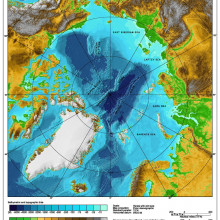
08:12 - Is the Arctic icesheet shrinking?
Is the Arctic icesheet shrinking?
with Eric Wolff, University of Cambridge
Global warming is often in the news but this week the Daily Mail ran an article with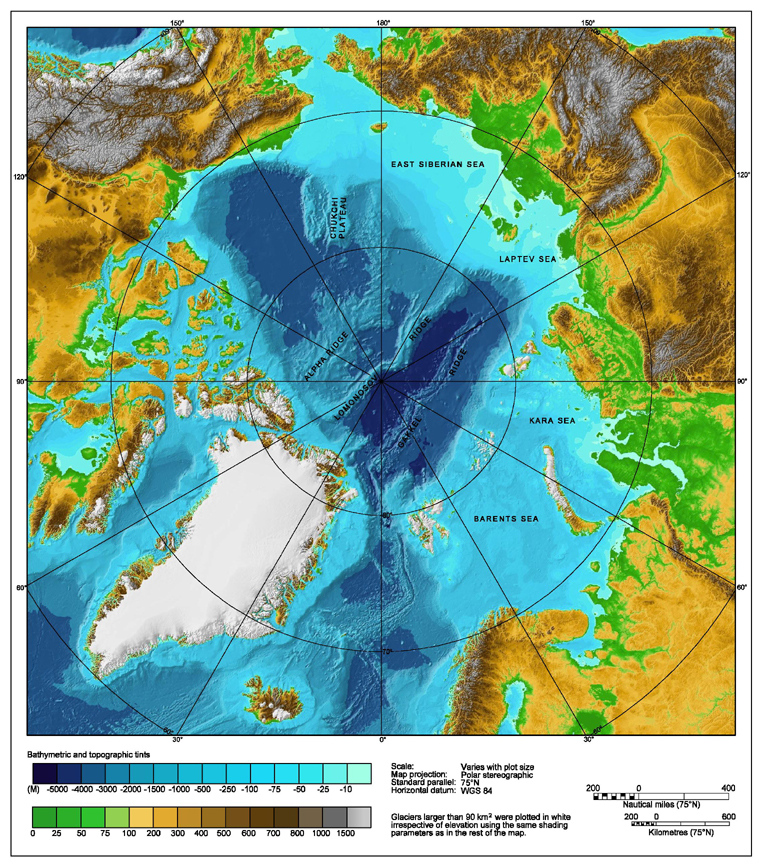 the headline: "Myth of ARCTIC meltdown: Stunning satellite images show summer ice cap is thicker and covers 1.7million square kilometres more than 2 years ago."
the headline: "Myth of ARCTIC meltdown: Stunning satellite images show summer ice cap is thicker and covers 1.7million square kilometres more than 2 years ago."
The article showed a graph charting a steady decline in ice coverage over the last 10 years and then a rebound, where ice cover appears to have doubled in the last two years. Professor Eric Wolff from the University of Cambridge explained to Ginny Smith that there's more to this story...
Eric - So, we're talking about the ice that's frozen on top of the Arctic Ocean and every year, at the end of winter, there's a maximum amount of ice that covers most of the Arctic Ocean. Most of what you'd see between Siberia or in Canada or Greenland. And then that retreats by somewhere between 50% and 70% at the moment during each summer. So, it should reach its minimum actually in a few days' time. So, what they're looking at is the average amounts of ice in August. So, pretty close to a minimum and that's clearly trending downwards quite rapidly by around about 10% every decade. But it does vary from year to year because of various natural reasons and 2012, which is the year that the Daily Mail picks on - 2 years ago, happened to be a really low year. And 2014 actually looks very similar to 2013. So, if you take any 10-year period in the record that I've got in front of me, then it just looks like a lot of noise actually. It just looks as though it's going up and down. But as soon as you look at the whole 37 years that we've got satellite data, it's very obvious that the sea ice is decreasing. 2014 is still lower than any year between the beginning of the satellite record in 1979 and 2006. So, it's certainly not a high sea ice year.
Ginny - So, it's not really that ice is recovering as such, it's just sort of natural fluctuations.
Eric - It's natural fluctuations, just as you wouldn't expect asyou come into summer, you don't expect every day to be warmer than the one before. It's the same thing. As we're losing the ice slowly as due to global warming, and particularly to Arctic warming, you don't expect every year to be lower than the one before. There are lots of meteorological factors that can affect it.
Ginny - So, this doesn't shed any doubt in your mind on the idea of global warming is happening and it is having these effects on the Arctic?
Eric - No, none at all. I'm afraid there isn't really good news here. the amount of carbon dioxide in the atmosphere is continuing to increase pretty rapidly. That inevitably means that temperatures will warm. It won't be uniform around the globe and it won't be the same every year, sometimes more heat goes into the ocean, sometimes more goes into the atmosphere. But I'm afraid, as the Arctic warms, the ice does melt.
Ginny - So, what is it that's causing these natural fluctuations within that kind of downwards trend?
Eric - Well, it's mainly due to the meteorology in the Arctic which determines how the ice moves around because the amount of sea ice that's left is not only a function of the temperature of the ocean in the atmosphere, but it's also a function of where the ice actually gets moved to by the winds. So for instance, in 2012, part of the course was that just before, some time in August, there was a big storm at a time when the ice was already quite thin. And that big storm just broke the ice up and moved it all southwards into an area where it could melt. And that wasn't the complete reason. There are lots of things that push the ice around and put it in one area or another, somewhere that's colder, or somewhere that's warmer. But that does mean there can be quite big variations from year to year, actually, especially at this point of the year when the ice is already quite thin.
Ginny - So, if there are so many factors going on, how do you go about making predictions about how the ice will be affected? I mean, there was this prediction from Al Gore that it would've all gone by now. How did he get that so wrong?
Eric - He was quoting a study that said that it might have disappeared by now and he made it sound so he thought it would. But he got a little over enthusiastic I'm afraid. So, what you do, I'm afraid the only way you can predict the future because we haven't seen it yet is by using models. Those models are based on the best physics that we have of understanding both how the climate works and how the ice responds to the climate. And so, all you can do is to run these models with and without changing levels of carbon dioxide, and what the models are saying. it's a whole range of models from different countries, is that around this time of year, the ice will virtually have gone, that there'll be a little bit of ice here and there, but a few percent only. The ice will virtually have gone by 2050. So, it's not this year, it's not next year, it's not the best bet, but it's not going to come back again either. So, some time within the next few decades.
Ginny - So, you're putting all this kind of data that you have into a computer model and sort of simulating the future. But different people are still making different predictions. So, how can the public decide who to trust?
Eric - They're all making predictions that the ice is going to reduce. If you now run the models through the last 30 or 40 years, they're actually doing pretty well. They don't get quite as big fluctuations we've seen, but they're not doing too badly. But all the models would predict that the ice is going to reduce. Exactly, when there's no ice in September differs from model to model. If you think that we need to take action, you'll still think whether it's 2040 or 2070, and if you don't really care about it, then you'd still think you don't care about it.
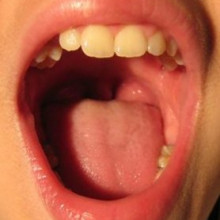
13:48 - Why are languages going extinct?
Why are languages going extinct?
with William Sutherland, University of Cambridge
Nearly 7000 distinct languages are currently spoken around the world, but studies suggest that up to 90% of them are in danger of disappearing by the end of the Century, making them more threatened than animals or plants. Now, biologist William Sutherland has discovered that the same criteria used to highlight endangered animal species can also identify threatened languages, meaning we can now spot them more easily and take steps to preserve them, as he explains to Chris Smith...
suggest that up to 90% of them are in danger of disappearing by the end of the Century, making them more threatened than animals or plants. Now, biologist William Sutherland has discovered that the same criteria used to highlight endangered animal species can also identify threatened languages, meaning we can now spot them more easily and take steps to preserve them, as he explains to Chris Smith...
William - There are 6,900 languages around the world and curiously, they're distributed in the same sort of patterns as where the richest abundance of animals are. So, areas where there are most birds and most mammals are areas where there are most languages as well. So, the areas that are tropical, the areas that are mountainous, the areas that have lots of forests, both have lots of languages and lots of different bird species and mammal species.
Chris - Why do you think that is?
William - Because there are similar processes that cause speciation with different species evolving and languages to evolve. So, if you have areas that are very stable, you can have a small population of humans living in that area persistently, isolate some other individuals and developing their own language. And similarly, you can have species occurring in isolation, evolving from other species and creating greater diversity.
Chris - And is this 6,900 plus languages actually stable? Are the numbers saying about the same or are there new languages springing up all the time or are languages being lost?
William - Well, languages do arise, but most languages in the world are declining and very many of the languages are showing declines and sometimes quite rapid declines. So English for example is increasing rapidly, but many other languages are declining.
Chris - So, what was the question you were trying to address with this?
William - What we were interested in is looking at the patterns of change of languages across the world. There've been lots of people sort of producing a lot of hand waving arguments as to how they're changing and we wanted to apply quite a rigorous approach. And conservationists have an approach where they classify species according to how threatened they are.
Chris - So, the same criteria that could be used to define whether or not a species is endangered can also tell us whether a language might go extinct.
William - Absolutely. You can apply exactly the same process. If you do so, it turns out that languages are more endangered than birds are or mammals are as a group.
Chris - What are the big determinants of whether a language in an area will survive or whether it's going to go extinct?
William - Languages that have a small population size seem to decline much more rapidly. And part of that makes a lot of sense, that if a language is only spoken by a few speakers then it becomes less attractive to learn. And so, the decline gets even more rapid. So, if a population gets small, the rate of decline gets even faster, and so, it gets smaller and smaller, and then they go extinct.
Chris - In the same way, because we know when we look at animal populations, biologists talk about there being a threshold population size where if the population dips below a certain size, it's probably going to be curtains for that species. Do you see the same thing with languages then that if there's not more than a certain threshold number of people speaking that language, it probably isn't going to last beyond that generation?
William - Exactly, right. So, as languages get scarce then they will become scarcer and scarcer. It's exactly the same for species and for languages.
Chris - And will there any areas around the world that were real hotspots? We know there are hotspots of species extinction. Therefore, do you see areas where languages are similarly threatened and do they overlap?
William - There are some areas that are hotspots to extinction. So, northern Australia has a lot of languages that are right on the edge of extinction, northwest United States and Canada, similarly have a cluster of languages that are very scarce and declining.
Chris - Could something be done to preserve languages in the same way we're saying that species are important for biodiversity, they make the world richer?
William - You can record the languages. There's a lot of interest in doing that. And also with the internet, there are various people that are speaking these languages on the internet. And that they're managing to speak with a few other speakers of that language elsewhere and they're being brought together through modern technologies.
Chris - Is it easy to preserve a language? I mean, I know you said you can record things, but there are subtleties in language which if you're not a speaker, you won't just be able to pick up on, just by listening to a recording of someone talking through some of the words.
William - Absolutely. So, you'll retain some of that information, but you won't retain all the subtleties.
Chris - But why is it important?
William - It's an important part of the global culture. A lot of information is stored in those languages, a lot of knowledge is stored in those languages, and there tends to be a pattern that when people lose languages, they often regret it a generation or two later. And they see that as part of their culture that has disappeared and they very much regret having lost. So, they see it as an important part of their identity, an important part of something they're proud of, and they're very sad when it goes.
Chris - So in other words, although it may seem trivial to lose a language, there may well be social ramifications that will cross generations.
William - Absolutely, and lots of information is stored. So, lots of information about the species and culture and the mythology, and the songs also go and the language goes.
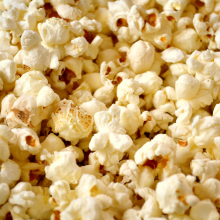
19:27 - Can Bruce Willis make you gain weight?
Can Bruce Willis make you gain weight?
with Aner Tal, Cornell University
Obesity is a growing problem across the world, but some of our eating habits could be influenced by the type of TV we are watching. Aner Tal, from Cornell University in the US, looked at how much food volunteers ate while watching either an action-packed movie or a sedate talk show. He explained to Chris Smith how our watching and eating habits are closely linked...
Aner - Being distracted by watching TV can lead people to eat more. What we wanted to find out is, if different TV content can lead people to eat more or less, depending specifically on how dynamic the content was or how engaged they are with the content.
Chris - So literally, TV consumption can affect food consumption.
Aner - Yeah.
Chris - In what way?
Aner - Basically, your attention is limited. So, the more you're paying attention to what you're watching on the TV, the less you're paying attention to what you're eating. So, if you're watching something that's very absorbing, you can just go on eating without realising it.
Chris - So, how did you do the study?
Aner - We randomly divided participants into three groups and each group watched 20 minutes of programming. One group was given a segment of the action movie "The Island." Another group was given a segment of the talk show, the "Charlie Rose Show" which is a fairly laid back, relaxed conversation type of talk show. The third group was given the same segment from "The Island" but without sound. Each person watching the shows was given an amount of snacks they had in front of them and they could eat while they're watching the shows. And when they were done watching the show was, we measured how much they had eaten.
Chris - What came out of it? What did you find?
Aner - People watching the action movie ate more snacks than people who were watching the talk show. Even people who watch the action movie without sounds still ate considerably more than people watching the talk show. So, they are 46% more calories, even watching the action movie without sound. With sound, they ate 65% more calories.
Chris - How many calories did they burn because it was exciting?
Aner - I don't think it works that way? I wish we could just watch like exciting TV or a sports TV and that would be our exercise.
Chris - Was it genuinely that there's something about the content or the way that the programming works that makes people compulsively eat?
Aner - I think so. So, we're still doing some follow up investigations to get a more precise idea of what the process is, but you can, to some extent, have divided attention or shift your attention. But if you're completely absorbed in something, then it'll be much more difficult to pay attention to something else. So, if you're watching TV, you're not watching what you eat.
Chris - And does this in some way subvert your brain's circuitry which logs how many calories are going in and tells you to stop eating?
Aner - I would say, more than that, it's your paying attention to how you're feeling. So, kind of getting that feeling that you know, "I've had so much chips, I already kind of feel like throwing up, so maybe I should stop." If you're not paying attention to how you're feeling, you can just continue eating on automatic.
Chris - Is there a relationship between sex - I don't mean the physical act of sex. I mean, gender and this effect. Do you see that men or women are more susceptible?
Aner - Yeah, so I mean, there's probably a relation between the physical act of sex as well but...
Chris - The reason I asked this is because obviously, we know that men find certain types of action movie more compelling than women. If I turn on a thriller, my wife will often fall asleep whereas I'll still be watching it at midnight. So, is there a sex susceptibility in this effect, do you think?
Aner - We do think so and that's one of the initial pieces of evidence we got from this study that gives us a hint about what's going on because there was a bit higher consumption for males watching the action film than for females. So, it had more of an effect of them and that might be because it engaged their attention more.
Chris - So, what would your recommendations be to people who are traipsing off to the cinema or to their home cinema, armed with a box of popcorn?
Aner - Leave the box of popcorn at home. No, I think it's partly about controlling how you'll act when you're unconscious. So, just assume you're going to go into a movie coma, you're going into something that you're going to be swallowed up in and either get a healthy snack. That way, you'll be eating baby carrots versus chips or chicken wings. Or just restrict the quantity you have. So, just have a pre-determined amount and then you know that's what you're going to eat because that's what you have. Even you can have a situation where you have more if you want to, but you'll need to actually go for the effort of getting up walking all the way to the kitchen which will also burn a lot of calories and getting more. And setting things up that way versus just having a huge amount in front of you is going to prevent some of this mindless eating trap.
Chris - So basically, make the fridge really hard to open so you'll at least burn some calories retrieving the supplementary salts.
Aner - Yeah, you'll do aerobic activity walking to the fridge and then you'll build your muscles opening it. Yeah, that's a good idea.
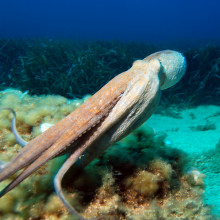
25:00 - What is biomimetics?
What is biomimetics?
with Richard Bonser, Brunel University
Biomimcry is the process by which scientists borrow from biology. They studying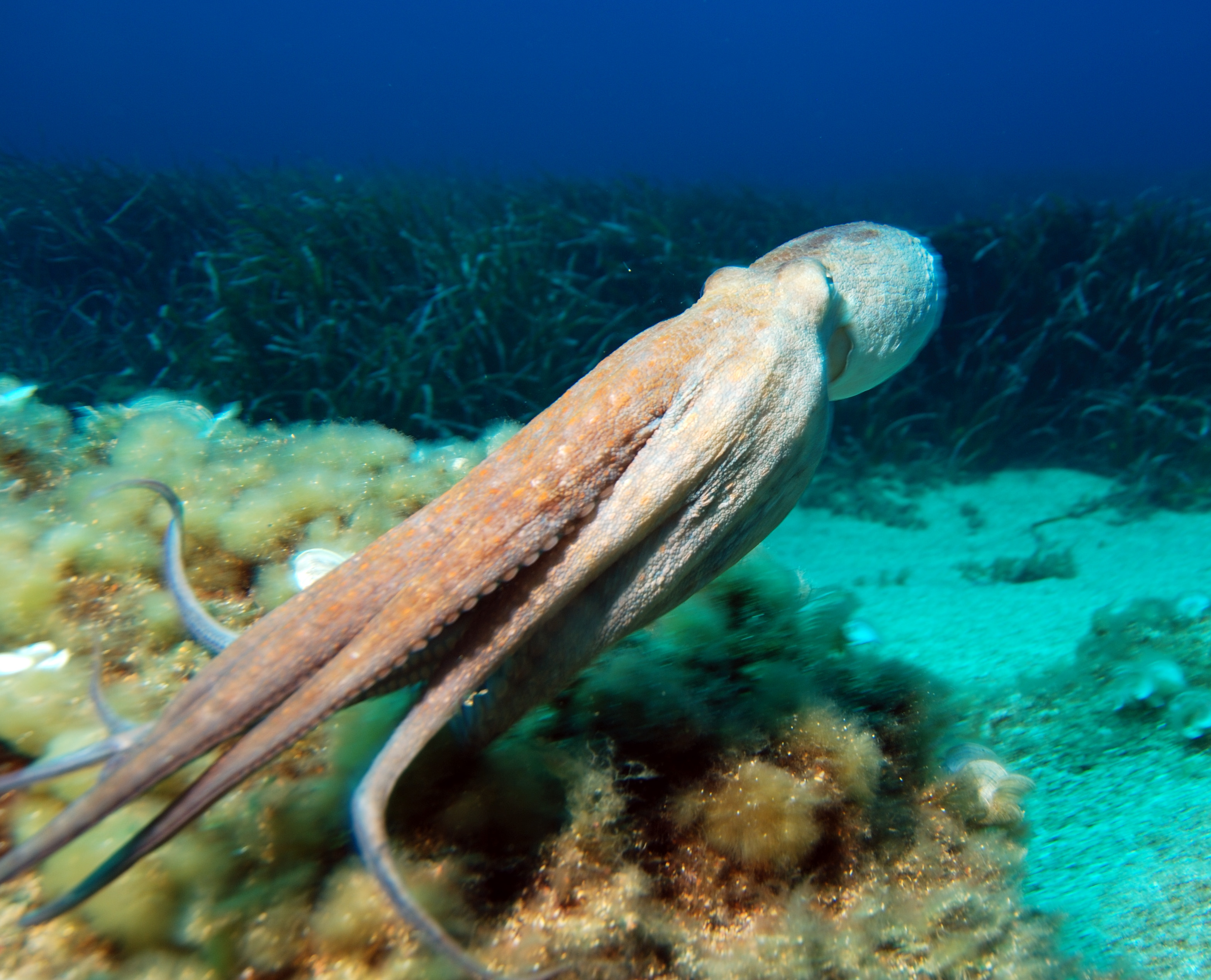 how mother nature does things and then use these ideas to overcome a problem they are grappling with - like how to produce clean energy, food, medicines or new materials that are stronger or less harmful for the environment, like biodegradable plastics.
how mother nature does things and then use these ideas to overcome a problem they are grappling with - like how to produce clean energy, food, medicines or new materials that are stronger or less harmful for the environment, like biodegradable plastics.
And with billions of years of experience, nature has some pretty smart solutions to these problems. So, increasingly, creative minds are turning to nature for fresh design ideas--from tree leaves to butterfly wings or birds beaks.
Richard Bosner is a "biomimic" from the University of Brunel and explained to Chris Smith what biomimicry is...
Richard - Really, it's two components. The first bit is that we really have to understand how the biological system works. That could require lots of different sorts of knowledge - perhaps chemistry, mechanics or even electrical things in the way that nerve cells work. And then having understood how the biological system works and identified the real clever mechanism, we then try and implement that into a new system, structure or material.
Chris - Would - talking of materials - a really good example of that would be Velcro for example because the story of that was a man walking his dog, wasn't it?
Richard - Yeah. I mean, the story of Velcro is quite amazing. George de Mestral in 1948 took his dog for a walk. When he came home, it was covered in burdock seed burrs and he had the stroke of genius of recognising that these seeds were hitching a lift on the passing animal. That they had too attached firmly enough to stick to the animal and be carried away, but not so firmly that they couldn't fall off at some point and then germinate. So, he recognised that this was a really neat way of joining materials, fabrics together in an easy to undo way.
Chris - That's one example of how we can take inspiration from nature and then design "a thing" and object or an application. But nature is more complicated than that because it doesn't just exist as isolated objects. There are whole systems where one object works with another object and so, you have a sort of process. We could copy a process or even taking it a step further. If you look at the world around us, one thing feeds another. So, even flees have flees and the whole thing goes around without any wastages, a natural system of recycling.
Richard - Indeed. I think initially, people tended to concentrate on a particular mechanism or material when they were researching biomimetics. But you can think a lot wider than that, looking at processes, communication networks and decision making. So, it's not necessarily all about bits of material.
Chris - Now, tell us about the octopus that you've been involved in because you've been working with the EU on a robotic system, haven't you?
Richard - We were partners at Redding University, we're involved in a big European Union funded project which was aiming to produce soft bodied robot inspired by the octopus. Our specific role in the project was designing a tough waterproof skin that had sensors and suckers on it. So, this would protect the underlying mechanisms that enabled the robot to move around and could also tell us a bit about its environment.
Chris - What was the outcome? Did it work, this octopus?
Richard - Yeah. The lead partners in Pisa managed to develop an integrated robotic octopus that had 8 arms, it could use 2 for manipulating objects and another 6 arms to help it shuffle around underwater.
Chris - So, what can you do with it?
Richard - Well, the idea really was to get a complete shift in the way we think about robotics because lots of robots have many rigid components which means they're quite inflexible in the sorts of things that they can do. So, the idea of making an entirely squidgy soft robot was that it can move in all sorts of different ways. An octopus is an incredible animal. It contains only one rigid component and that's its beak and it can squeeze through holes that are only marginally bigger than its brain. So, it gives you quite a lot of extra capabilities that you don't get with existing rigid robots.
Chris - Does this mean then that there is no limit to what we could achieve with biomimicry? Do we just take what nature has already done and then mix all the different parts together and come up with an octopus that has an incredible power supply and incredible strength or will there be limits?
Richard - Well, there's no reason why you can't, indeed, in our octopus project, we had suckers that were inspired by those found on squid - because they work in a different way to the way an octopus's suckers work.
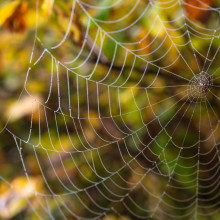
29:40 - Can we copy spider silk?
Can we copy spider silk?
with Dr. Ann Terry, The Rutherford Appleton Laboratory
Spiders are one of the most promising creatures for biomimicry. And that's 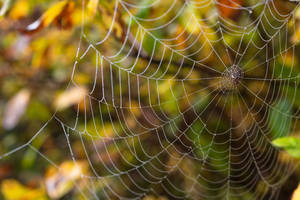 because they produce different types of silk - some super sticky, some super strong, and others, super stretchy. The closest we've come to artificially recreating the characteristics of spider silk is something called aramid which is used in bulletproof vests and bicycle tires. But to make this fibre requires high temperatures and pressures which means the process is polluting, expensive, and inefficient. But a spider can make it at room temperature on a diet of dead flies and water so how do they do it? Graihagh Jackson went to the Rutherford Appleton Laboratory in Oxfordshire to speak to Ann Terry...
because they produce different types of silk - some super sticky, some super strong, and others, super stretchy. The closest we've come to artificially recreating the characteristics of spider silk is something called aramid which is used in bulletproof vests and bicycle tires. But to make this fibre requires high temperatures and pressures which means the process is polluting, expensive, and inefficient. But a spider can make it at room temperature on a diet of dead flies and water so how do they do it? Graihagh Jackson went to the Rutherford Appleton Laboratory in Oxfordshire to speak to Ann Terry...
Ann - Spider silk is remarkable because it's actually the toughest material we know. So that means that it's not just strong, but it's also very elastic. And in that way, it's able to absorb all the energy. If you think of a classic spider's web, a spider has to capture the prey as it hits that web. So that means it has to trap it, it has to stop it and if you think some of these flies being caught in webs are so much bigger than the actual fibre that's catching them. And so, it has to damp all of that energy. And so, this means that you end up with a very, very tough material.
Graihagh - So, how does a spider make silk?
Ann - So, the spider produces these proteins in water in its body and then pass through a duct to the exit of the spider's abdomen. Now, a spider doesn't push the silk proteins out to make the fibre. A spider actually pulls them out. So, a spider will glue down the silk that they want to produce and then walk away to draw the silk out. And within its body, what it does is it changes the pH of the solution. It changes the metal ions, and the salts which were involved in giving the protein its shape and how it folds. And at the same time, starting to elongate the molecules and stretch them so they're able to come together to form these closed links they need to actually make a fibre.
Graihagh - I always thought of it as a bit like a spool, like on a sewing machine that pulls it out, but obviously going from a liquid or a gel then to a solid, it's much more complex than that.
Ann - Yeah, so it's actually produced on demand. It's not stored as a reeled up fibre in the body and the spider produces up to seven different types of silk or from different exits, all from different little spineretts and they all have a different chemical constituency. They have a different sequence of amino acids that means, they're produced in very slightly different ways. So, the shape of the storage gland and the duct is different and that leads to different mechanical properties. So, some are highly elastic, some are sticky, some are these super tough fibres. So, in one naturally occurring system, we have the ability to look at all of these ranges of properties.
Graihagh - How do you physically look at them? Are you using a microscope?
Ann - So, we've been using a technique called small-angle neutron scattering. What we're looking at is the actual size and shape of the proteins in the solution and then from that information, we then change in some way the chemical constituency of that solution. We might change its pH, we might change the amount of salt in the solution and then look and see how that has influenced the silk proteins. And all of those things help us to build a picture of how the spider might be controlling the silks in situ in their abdomen.
Graihagh - There's a tiny teeny spider's web next to us on a bench. I'm looking at it and we're all familiar with that feeling when you walk through the garden and you walk into a spider's web, you can sort of feel the lose strings on it. How strong is it?
Ann - To even feel one of the small spider's webs is remarkable. That fibre in that web is at least 20 times thinner than a human hair. If not, more. And so, the webs that we deal with or the spiders that we use are actually what's called the Golden Orb Web Spider. They spin a silk that is so strong that as you put your hand up, it can really resist your hand.
Graihagh - So, where do you keep all these orb spiders?
Ann - So, we have greenhouses. Imagine what these greenhouses are like. Spiders eat flies, so these are greenhouses filled with spiders and flies. So, they're not a particularly nice environment to go into. But we go in and we collect a spider and then we take them down to our lab. And literally, we can immobilise them on a small board and then actually collect the silk from the abdomen by winding iy up onto a mechanical bobbin. Now the beauty of this means we can actually sometimes we reel them very fast, sometimes very slow and look at how the properties change as we do that.
Graihagh - How much silk can you get from one spider?
Ann - We're talking about very, very little silk. So, a female spider can reel hundreds of metres of silk, but it's such a fine fibre. So although you might reel a lot, it's actually not a lot of material.
Graihagh - So, how might we be able to one day hopefully, either - I suppose, manufacture it or produce it somehow synthetically?
Ann - Well, that's being looked at. So, there are groups who are looking at how you could make silk proteins. And so, they will try and put the silk proteins into plants and things like that, but you still need to be able to process them into something useful.
Graihagh - Harnessing something of this power, of this strength surely means there's got to be lots of really interesting applications if we could reproduce something like spider silk.
Ann - Yeah, and a huge range of applications as well. So, everything from applications where you need something very light weight, or you could think of lightweight tethers for space applications, right through to - there's very good impact resistance if you're able to build composites from silk with another material. So then you might start thinking of impact resistance. But also, there's a lot of medical applications as well because the body has a very low immuno-response to silk. Silk is being used as sutures before now. And so, you can actually start looking at making ligaments and tendons, vascular applications for silk. We're also interested in whether we could actually extend the range of properties to be even more useful for certain applications for us as well.
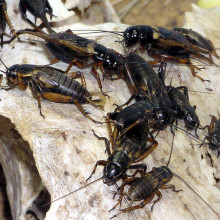
36:49 - How do insects hear?
How do insects hear?
with Daniel Robert, University of Bristol
Humans and other mammals collect sounds using their eardrums which vibrate and these vibrations are transferred through 3 tiny bones called ossicles to a structure in the inner ear which is called the cochlea and this converts sound waves quite literally into brainwaves. But it turns out that insects might be able to teach us a thing or two about sensing sounds and even show us how to build super small microphones and hearing aids. This is the brainchild of Professor Daniel Robert who's a researcher at the University of Bristol.
and these vibrations are transferred through 3 tiny bones called ossicles to a structure in the inner ear which is called the cochlea and this converts sound waves quite literally into brainwaves. But it turns out that insects might be able to teach us a thing or two about sensing sounds and even show us how to build super small microphones and hearing aids. This is the brainchild of Professor Daniel Robert who's a researcher at the University of Bristol.
Daniel - Well, insects hear through tiny little organs, tiny little ears that also have eardrums that are structured a bit differently. What's interesting about insects is their diversity because we can find ears virtually everywhere on the body - from the wings of some butterflies, the chest of some flies, and the legs even of some crickets.
Chris - When you say you can find little ears there, if you look at those hearing organs, how do they differ from my ears for example?
Daniel - First of all, they're much smaller. The Cochlea you have is roughly a centimetre across. These ears are down to half a millimetre or even smaller sometimes. Now, they're also structured very differently. Even though they do the same job for those of the crickets for instance, their ears are structured in a way that we couldn't imagine before.
Chris - Now, we talked about these three tiny bones, the ossicles - hammer, anvil and the stirrup in a human. Do insects have tiny bones as well?
Daniel - For us, in order to convert the acoustic wave that is in the air and push that energy into the cochlea, we require that amplification that the middle ear bones are generating, some sort of a clever 3-part leverage system which is quite complicated. In insects, we don't find that. In these particular crickets, what we find is a simple lever system that does the centrifugation but in much, much simpler way anatomically. And that's kind of an exception and we were pretty excited to find out because that gives us a particular solution to the same problem of amplification, but with a much simpler system.
Chris - When you say a lever system, this would be a bit like jacking up a car. Basically, you put one thing under the car wheel and then have a very long handle, and you're basically making the job much easier to do by having a very long handle. The insects are turning these low-energy soundwaves into vibrations in their hearing organ by having this similar sort of lever system.
Daniel - Exactly. That's a good description because with a very small force at one end of the lever, you generate very large force at the other end. But the large force has a long displacement if you want and the other side has a short displacement. But no matter what, your car is going to be lifted. The same principle applies to shifting these vibrations into the inner ear of the insect. That works for an awful lot of frequencies which is the beauty about it. You can have lower frequencies and higher frequencies. So there, we learn a lot about how the systems having evolved for 200 million years can be very efficient at capturing sound in way that we've never imagined before.
Chris - So, your goal would be to take the structure of what a grasshopper uses to pick up soundwaves and convert them into nerve signals and copy that, so that you could instead have for instance, a tiny microphone.
Daniel - Exactly. We want to be inspired by the process that evolution has come up with, and maybe more excitingly even, is to borrow one process from a grasshopper, another process from a fly, another from a butterfly, and makes some of a chimera - a mix between these different processes that are good at different things - detecting the direction of sound, detecting a nice amplitude, being very sensitive, or as we said before, being able to push that to some form of cochlea to draw an analysis of the different pitch of the sound. So with that, we can generate tiny microphones. We hope that would emulate what we've learned from the tiny ears of insects.
Chris - Why do you think insects have evolved to use this system and we evolved another system that what you're saying is, turns out to be less good than what the insects have got?
Daniel - That's a very difficult question to answer. What we know about insects is that they have under their skin, just about everywhere a mechanoreceptor. That means little cells, little neurons that are sensitive to tiny vibrations. So, what insects have as an advantage, having the skeleton outside as opposed to us is that it can just thinner a little bit of their skin over here, make a little lever over there, they're very modular and they're very flexible in their anatomy - one other diversity. So as a result, what we observe today is a series of different solutions to the same kind of - if you want - engineering problem which is the detection of sound. So, our ears are deep-down into our skull and they are embedded in vast amounts of fluid. For insects, this is not the case. They're much smaller and much lighter which allows them to be much more sensitive and accurate.
Chris - But given how tiny they are, this means that they will respond very well to high frequency sounds, I would presume. But does that mean that were you to make a microphone, modelling or based on the insect structure, it would have a problem detecting lower frequency, bigger wavelength soundwaves?
Daniel - Insects are very happy to listen to high frequencies, up to 150 kilohertz, reminding you that we stop at 15 or 20 kilohertz as humans. So, insects are very good - particularly crickets - at measuring the sounds that come from bats. So what we do there is extract the knowledge if you want and then push this data into a mathematical model in a computer. And then we start another process of optimisation where we ask basically that system we have by modifying ever so slightly some bits of the system like the eardrum to respond to lower frequencies. We're trying to adapt that to lower frequencies to make this compatible with human voice, human hearing.
Chris - How do you build a plastic model of an insect ear?
Daniel - Well, for this, we use new tools that have been available now for a little while and that come from nanotechnology. Some very fancy 3D printers that can print very tiny structures. So, we used that, scaled it up a little bit and build it on little organs that are half a millimetre or a millimetre across that emulate the shape and form of these insects' ears. And we do the same test again as we did with the true insect.
Chris - And if you are successful and you can produce these miniature microphones, what application will you have for them and why will they be better than what we currently have?
Daniel - Our hope here is to be able to borrow the best of different species, make a microphone that will work a little bit like a cricket ear and then incorporate what flies are doing with sound for directionality. And then at the end, perhaps have a microphone or two, or three, or perhaps 10 in one package, and put it in a hearing aid to be able to do what we call auditory scene analysis. A microphone that would be clever enough, intelligent enough in the biomimetic sense to detect sounds that perhaps normal microphones with just one membrane are not able to detect. So, we're getting there. We're not quite there yet, but we think that we have here a solution inspired by nature that could be useful for auditory processes indeed.
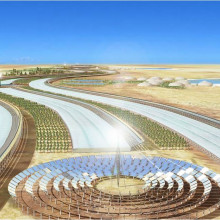
44:27 - The Sahara Desert Project
The Sahara Desert Project
with Michael Pawlyn, Exploration Architecture, Sahara Forest Project, sustainability
The natural environment is full of complex processes. One species' trash could be another one's treasure. This closed-loop system where nothing goes to waste might be a way to solve problems like climate change, landfill and pollution. Michael Pawlyn, Director of Exploration Architecture, looks to nature to make new sustainable architectural environments. His latest endeavour, the Sahara Forest Project, began by observing one special species of beetle. Ginny Smith spoke to him about the beetle that sparked the whole process...
Michael - It is a pretty impressive beetle actually because it's evolved a way of harvesting its own freshwater in a desert and that is pretty remarkable. The way it does that is that it comes out of its hiding place at night, it crawls to the top of a sand dune. And then because it's got a map black shell and it's very lightweight, it's able to radiate heat out of the night sky and becomes slightly cooler than its surroundings.
So then, when the moist breeze blows in off a sea, you get these little droplets of water forming on a beetle's shell. Just before the sun comes up, it dips its shell up, the water runs down to its mouth, and it has a good drink and goes off and hides for the rest of the day. And the ingenuity, if you could call it, that goes even further because if you look carefully at the beetle's shell, it's covered in little tiny bumps and those are hydrophilic, they attract water and between them, there's a waxy finish which repels water.
The effect of that is that as the droplets form on those bumps, they stay in very tight spherical form which means they're much more mobile than they would be if it was just a mist over the hard shell. So, it's an example of an amazing adaptation to a very resource-constrained environment and more and more over the next few decades, we're going to be facing resource-constraints. And so, I think it's a good example of just how much biomimicry has to offer.
Ginny - So, how have you copied this kind of shell to make something that's useful for humans?
Michael - Yeah, sure. I think maybe we need to just sort of back up a little bit because we were trying to do a number of things on this project. We wanted to develop an idea that would address multiple challenges simultaneously. Here, we wanted to develop an integrated solution that addressed climate change, water in desert regions, generating clean energy and so on. We also had a hunch that the world's deserts could be part of the clue to providing our future energy needs because if you look at the amount of energy that falls on the world's deserts, it's really phenomenal. If we could just capture a small amount of that, that would go a long way to solving our own energy needs.
Looking at an extreme environment like a desert, and you're interested in biomimicry, then you can learn a lot from the organisms that have already adapted to life there. So, that was where the fog basking beetle came in and that led us to develop a type of greenhouse which is cooled and humidified with seawater and then it condenses a certain amount of that humidity as freshwater in a process that's effectively identical to the beetle. And by making a cool, humid, growing environment, it means that the plants would actually need far less water to grow because it's humid so they transpire less. And then we could actually create a fair amount of freshwater to supply those plants with water.
Ginny - So, we've been talking about a sort of closed-loop design. How is that different to the way most things are currently built and designed?
Michael - Conventional human made systems tend to be fairly simple, linear and disconnected. In biology, it's completely different. They tend to be much more complex systems which are very interconnected and much more cyclical. In ecosystems, the waste from one part of that system nearly always becomes the input of a nutrient for something else in that system.
Ginny - But the natural world is so complicated and interconnected. Can we ever really build anything that's going to work like that?
Michael - It would be very difficult to immediately try and create a fully functioning ecosystem but what is much more straightforward is to look at how we can adapt our conventional approaches to move more towards the characteristics of ecosystems.
Rather than just having a single technology in a particular place, you can look at what the inputs and outputs of that technology are and then you can see what other kind of technologies you can combine with it. So for instance, on the Sahara Forest Project, we had the greenhouse and then we looked at what other kind of technologies that would be synergistic with that and we settled on concentrated solar power, which does have some interesting synergies, both the greenhouse and concentrated solar power work very well in hot sunny deserts.
The concentrated solar power should benefit from seawater cooling. It's as much as 10% more productive in terms of energy. We could make use of all that waste heat to evaporate more seawater in the greenhouse and potentially create more freshwater. And then furthermore, the shades created by those mirrors would allow us to grow a whole range of crops underneath in the shade that would not grow in normal regions. So, it's a way in which we could create a system for growing zero carbon food in some of most water stressed parts of the planet, creating abundant renewable energy and re-vegetating areas of the desert.
Ginny - That sounds amazing and obviously, it works really well in a desert where there's lots of sun and that sort of thing. But it's not really going to work here in England for example where it's cooler and more temperate.
Michael - What you have to do is look at the existing climate and the resources that you have around in a similar way and there's a fantastic scheme up in Yorkshire called the Cardboard to Caviar Project which - well, the simplest way of describing it is that they collected cardboard from shops and restaurants. They then shredded that and sold it to equestrian centres as horse bedding. When that was soiled, they were paid again to collect it, the manure and the cardboard.
They put it into worm composting systems which produced worms, which they fed to Siberian sturgeon, which produce caviar, which they sell back to the restaurants. So, it's a very neat example of what was a linear wasteful system becoming a cyclical system and also, creating far more value. So, they were paid in various stages along that way.
Ginny - That sounds amazing. We can take something that otherwise would've been thrown away and turn it into something really expensive and that people really want.
Michael - Yeah, the caviar example is a nice sort of example of alchemy really - turning something that's of such low value as cardboard into ultimately, caviar. And then there were a lot of other things that became part of that system. So, they actually transformed quite a lot of industrial land. They rejuvenated that, they planted crops that would allow them to run a biomass boiler that will keep the fish nice warm in winter so it carried on growing. They also started growing crops that they could use to make fish food and they found that there was a bakery nearby that was throwing away a lot of mouldy bread. And so, they used that to grow maggots which was another food stuff for the fish.
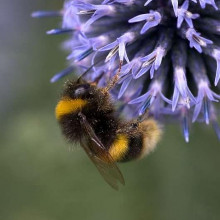
51:37 - If I move an insect in my car will it die?
If I move an insect in my car will it die?
Henry Ferguson-Gow - Generally, when a lost worker tries to enter a foreign colony it will be treated with aggression, at best rejected from the colony, and at worst outright killed.
This is because the invading ant would most likely be unrelated to the workers and queen of the new colony. Being closely related is the glue that holds a colony together, and an unrelated individual would have no evolutionary interest in working to raise the offspring of their adopted queen. Instead, they would exploit the resources of the colony, or worse, start laying their own eggs. Although sometimes nestmate recognition systems fail (for example, rogue buff-tailed bumblebees have been documented drifting between unrelated nests in the wild), in general an unrelated interloper is not tolerated.
- Previous EPSRC's Rising Stars
- Next Bereavement suppresses the Immune System










Comments
Add a comment